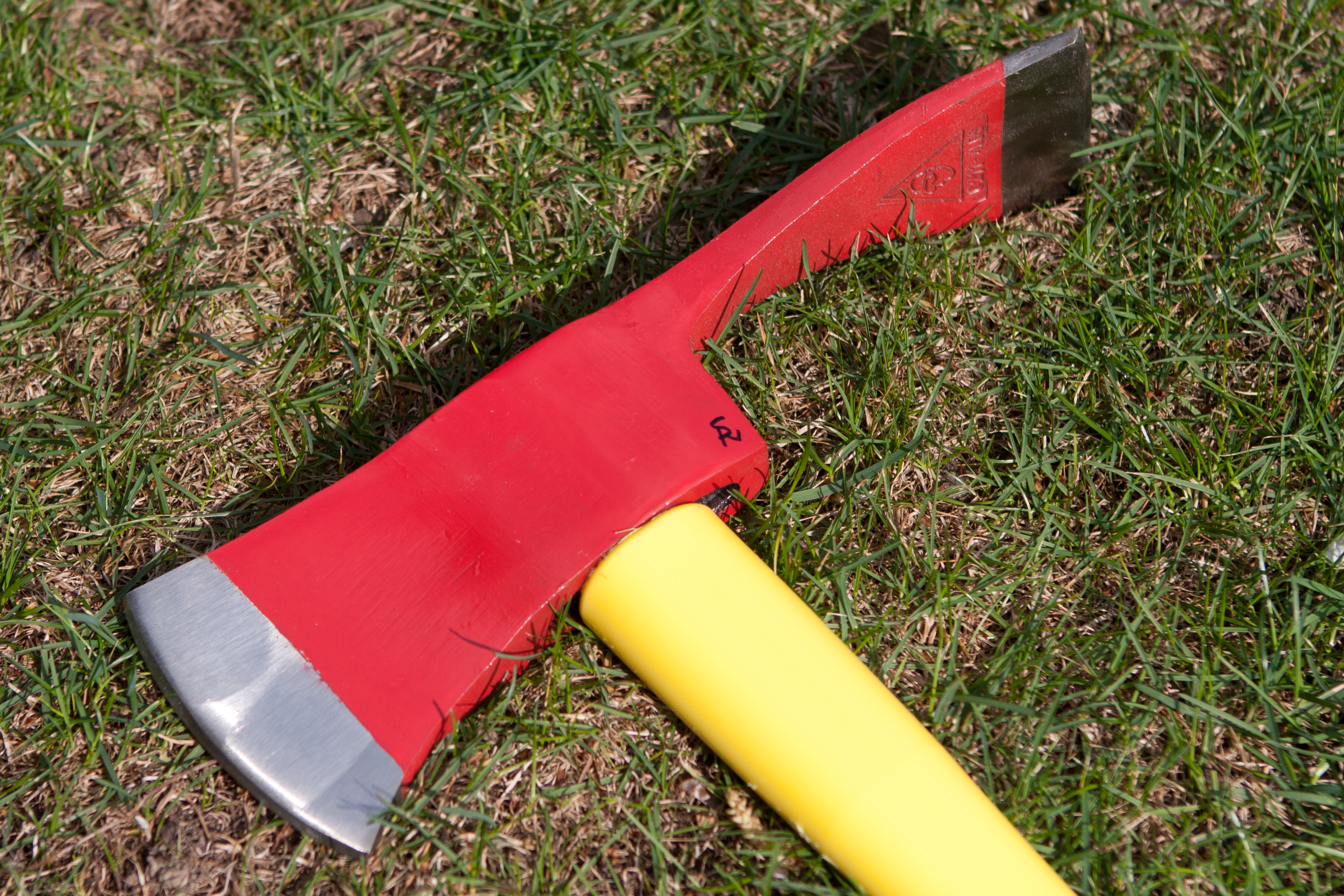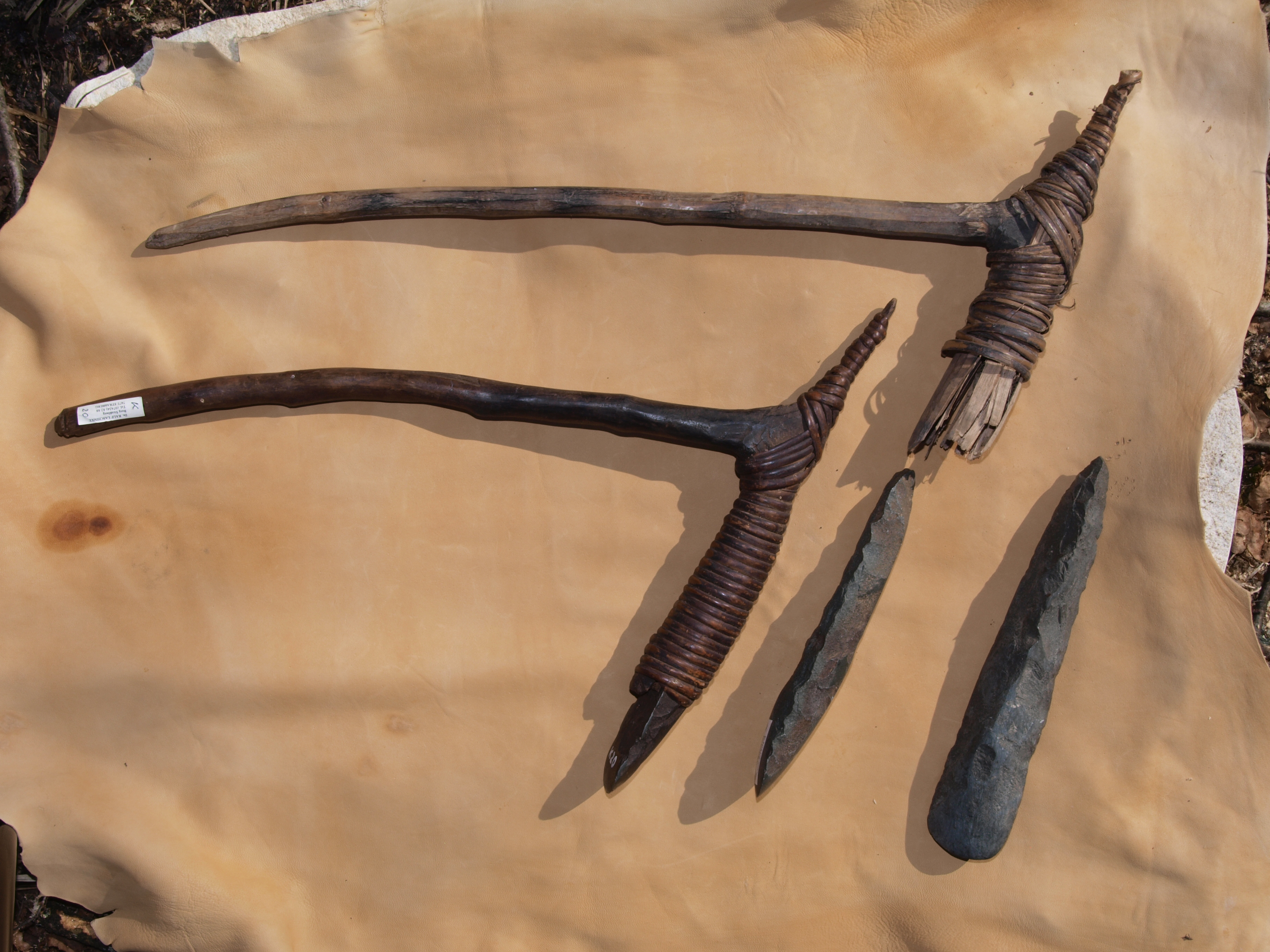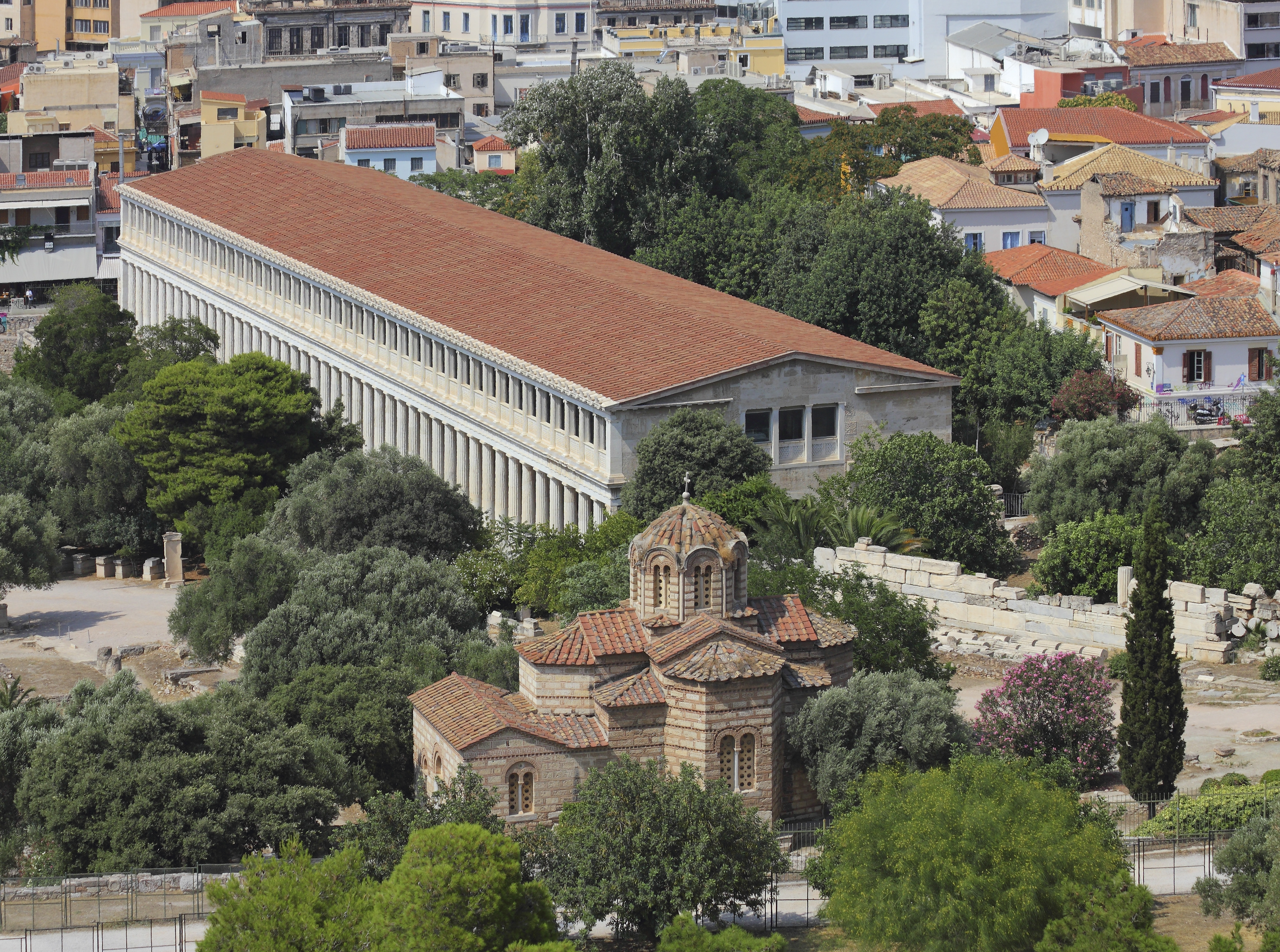|
Mattock
A mattock () is a hand tool used for digging, prying, and chopping. Similar to the pickaxe, it has a long handle and a stout head which combines either a vertical axe blade with a horizontal adze (cutter mattock), or a pick and an adze (pick mattock). A cutter mattock is similar to a Pulaski used in fighting fires. It is also commonly known in North America as a "grub axe". Description A mattock has a shaft, typically made of wood, which is long. The head consists of two ends, opposite each other and separated by a central eye. A mattock head typically weighs . The form of the head determines the kind and uses of the mattock: * A ''cutter mattock'' combines the functions of an axe and adze, with its axe blade oriented vertically and longer adze horizontally. * A ''pick mattock'' combines the function of a pick and adze, with a pointed end opposite an adze blade. Both are used for grubbing in hard soils and rocky terrain, with the pick mattock having the advantage of a ... [...More Info...] [...Related Items...] OR: [Wikipedia] [Google] [Baidu] |
Pickaxe
A pickaxe, pick-axe, or pick is a generally T-shaped hand tool used for Leverage (mechanics), prying. Its head is typically metal, attached perpendicularly to a longer handle, traditionally made of wood, occasionally metal, and increasingly fiberglass. A standard pickaxe, similar to a "mattock, pick mattock", has a pointed end on one side of its head and a broad flat "axe" blade opposite. A gradual curve characteristically spans the length of the head. The next most common configuration features two spikes, one slightly longer than the other. The pointed end is used both for breaking and prying, the axe for hoeing, skimming, and chopping through roots. Developed as agricultural tools in prehistoric times, picks have evolved into other tools such as the plough and the mattock. They also have been used in general construction and traditional mining, mining, and adapted to warfare. Etymology The Oxford Dictionary of English states that both ''pick'' and ''pickaxe'' have t ... [...More Info...] [...Related Items...] OR: [Wikipedia] [Google] [Baidu] |
Tree Planting
Tree planting is the process of transplanting tree seedlings, generally for forestry, land reclamation, or landscaping purposes. It differs from the transplantation of larger trees in arboriculture and from the lower-cost but slower and less reliable distribution of tree seeds. Trees contribute to their environment over long periods of time by improving air quality, climate amelioration, conserving water, preserving soil, and supporting wildlife. During the process of photosynthesis, trees take in carbon dioxide and produce oxygen. In silviculture, the activity is known as " reforestation", or " afforestation," depending on whether the area being planted has recently been forested or not. It involves planting seedlings over an area of land where the forest has been harvested or damaged by fire, disease, or human activity. Trees are planted in many different parts of the world, and strategies may differ widely across nations and regions and among individual reforestation c ... [...More Info...] [...Related Items...] OR: [Wikipedia] [Google] [Baidu] |
Hoe (tool)
A hoe is an ancient and versatile agricultural and horticultural hand tool used to shape soil, remove weeds, clear soil, and harvest root crops. Shaping the soil includes piling soil around the base of plants ( hilling), digging narrow furrows ( drills) and shallow trenches for planting seeds or bulbs. Weeding with a hoe includes agitating the surface of the soil or cutting foliage from roots, and clearing the soil of old roots and crop residues. Hoes for digging and moving soil are used to harvest root crops such as potatoes. Types There are many kinds of hoes of varied appearances and purposes. Some offer multiple functions, while others have only a singular and specific purpose. There are two general types of hoe: draw hoes for shaping soil, and scuffle hoes for weeding and aerating soil. A draw hoe has a blade set at approximately a right angle to the shaft. The user chops into the ground and then pulls (draws) the blade towards them. Altering the angle of the hand ... [...More Info...] [...Related Items...] OR: [Wikipedia] [Google] [Baidu] |
Pulaski (tool)
The Pulaski is a specialty hand tool used in fighting fires, particularly wildfires, which combines an axe and an adze in one head. Similar to a Mattock, cutter mattock, it has a rigid handle of wood, plastic, or fiberglass. The Pulaski was developed for constructing firebreaks, able to both dig soil and chop wood. It is also well adapted for trail construction, and can be used for gardening and other outdoor work for general excavation and digging holes in root-bound or hard soil. The invention of the Pulaski is credited to Ed Pulaski, an assistant park ranger, ranger with the United States Forest Service in 1911. Similar tools were introduced in 1876 by the Collins Tool Company. A tool that serves the same purpose was used in the Alps for over 300 years for planting trees (Wiedehopfhaue) or the dolabra in ancient Rome. Pulaski was famous for taking action to save the lives of a crew of 45 firefighters during the disastrous August 1910 Great Fire of 1910, wildfires in Idaho. His ... [...More Info...] [...Related Items...] OR: [Wikipedia] [Google] [Baidu] |
Enlil
Enlil, later known as Elil and Ellil, is an List of Mesopotamian deities, ancient Mesopotamian god associated with wind, air, earth, and storms. He is first attested as the chief deity of the Sumerian pantheon, but he was later worshipped by the Akkadian Empire, Akkadians, Babylonian Empire, Babylonians, Assyrian Empire, Assyrians, and Hurrians. Enlil's primary center of worship was the Ekur temple in the city of Nippur, which was believed to have been built by Enlil himself and was regarded as the "mooring-rope" of heaven and earth. He is also sometimes referred to in Sumerian texts as Nunamnir. According to one Sumerian hymn, Enlil himself was so holy that not even the other gods could look upon him. Enlil rose to prominence during the twenty-fourth century BC with the rise of Nippur. His Cult (religious practice), cult fell into decline after Nippur was sacked by the Elamites in 1230 BC and he was eventually supplanted as the chief god of the Mesopotamian pantheon by the Baby ... [...More Info...] [...Related Items...] OR: [Wikipedia] [Google] [Baidu] |
Dover Publications
Dover Publications, also known as Dover Books, is an American book publisher founded in 1941 by Hayward and Blanche Cirker. It primarily reissues books that are out of print from their original publishers. These are often, but not always, books in the public domain. The original published editions may be scarce or historically significant. Dover republishes these books, making them available at a significantly reduced cost. Classic reprints Dover reprints classic works of literature, classical sheet music, and public-domain images from the 18th and 19th centuries. Dover also publishes an extensive collection of mathematical, scientific, and engineering texts. It often targets its reprints at a niche market, such as woodworking. Starting in 2015, the company branched out into graphic novel reprints, overseen by Dover acquisitions editor and former comics writer and editor Drew Ford. Most Dover reprints are photo facsimiles of the originals, retaining the original pagination ... [...More Info...] [...Related Items...] OR: [Wikipedia] [Google] [Baidu] |
Byzantine Empire
The Byzantine Empire, also known as the Eastern Roman Empire, was the continuation of the Roman Empire centred on Constantinople during late antiquity and the Middle Ages. Having survived History of the Roman Empire, the events that caused the fall of the Western Roman Empire in the 5th centuryAD, it endured until the fall of Constantinople to the Ottoman Empire in 1453. The term 'Byzantine Empire' was coined only after its demise; its citizens used the term 'Roman Empire' and called themselves 'Romans'. During the early centuries of the Roman Empire, the western provinces were Romanization (cultural), Latinised, but the eastern parts kept their Hellenistic culture. Constantine the Great, Constantine I () legalised Christianity and moved the capital to Constantinople. Theodosius I, Theodosius I () made Christianity the state religion and Greek gradually replaced Latin for official use. The empire adopted a defensive strategy and, throughout its remaining history, expe ... [...More Info...] [...Related Items...] OR: [Wikipedia] [Google] [Baidu] |
Hesiod
Hesiod ( or ; ''Hēsíodos''; ) was an ancient Greece, Greek poet generally thought to have been active between 750 and 650 BC, around the same time as Homer.M. L. West, ''Hesiod: Theogony'', Oxford University Press (1966), p. 40.Jasper Griffin, "Greek Myth and Hesiod", J.Boardman, J.Griffin and O. Murray (eds.), ''The Oxford History of the Classical World'', Oxford University Press (1986), p. 88. Several of Hesiod's works have survived in their entirety. Among these are ''Theogony'', which tells the origins of the gods, their lineages, and the events that led to Zeus's rise to power, and ''Works and Days'', a poem that describes the five Ages of Man, offers advice and wisdom, and includes myths such as Pandora's box. Hesiod is generally regarded by Western authors as 'the first written poet in the Western tradition to regard himself as an individual persona with an active role to play in his subject.' Ancient authors credited Hesiod and Homer with establishing Greek relig ... [...More Info...] [...Related Items...] OR: [Wikipedia] [Google] [Baidu] |
Adze
An adze () or adz is an ancient and versatile cutting tool similar to an axe but with the cutting edge perpendicular to the handle rather than parallel. Adzes have been used since the Stone Age. They are used for smoothing or carving wood in hand woodworking, and as a Hoe (tool), hoe for agriculture and horticulture. Two basic forms of an adze are the hand adze (short hoe)—a short-handled tool swung with one hand—and the foot adze (hoe)—a long-handled tool capable of powerful swings using both hands, the cutting edge usually striking at foot or shin level. A similar tool is called a mattock, which differs by having two blades, one perpendicular to the handle and one parallel. History Africa The adze is depicted in ancient Egyptian art from the Old Kingdom onward. Originally the adze blades were made of stone, but already in the Predynastic Egypt, Predynastic Period copper adzes had all but replaced those made of flint. Stone blades were fastened to the handle by tying ... [...More Info...] [...Related Items...] OR: [Wikipedia] [Google] [Baidu] |
Works And Days
''Works and Days'' ()The ''Works and Days'' is sometimes called by the Latin translation of the title, ''Opera et Dies''. Common abbreviations are ''WD'' and ''Op'' for ''Opera''. is a didactic poem written by ancient Greek poet Hesiod around 700 BC. It is in dactylic hexameter and contains 828 lines. At its center, the ''Works and Days'' is a Almanac, farmer's almanac in which Hesiod instructs his brother Perses in the agricultural arts. Scholars have seen this work against a background of agrarian crisis in mainland Greece, which inspired a wave of Greek colonies, colonial expeditions in search of new land. In the poem, Hesiod also offers his brother extensive moralizing advice on how he should live his life. ''Works and Days'' is perhaps best known for its two mythological aetiology, aetiologies for the toil and pain that define the human condition—the story of Prometheus and Pandora, and the so-called Ages of Man, Myth of Five Ages. Synopsis In ''Works and Days'', Hesi ... [...More Info...] [...Related Items...] OR: [Wikipedia] [Google] [Baidu] |
American School Of Classical Studies At Athens
The American School of Classical Studies at Athens (ASCSA; ) is one of 19 foreign archaeological institutes in Athens, Greece. It is a member of the Council of American Overseas Research Centers (CAORC). CAORC is a private not-for-profit federation of independent overseas research centers that promote advanced research, particularly in the humanities and social sciences, with focus on the conservation and recording of cultural heritage and the understanding and interpretation of modern societies. General information With an administrative base in Princeton, New Jersey, and a campus in Athens, the American School of Classical Studies at Athens is one of the leading American research and teaching institutions in Greece, dedicated to the advanced study of all aspects of Greek culture, from antiquity to the present. Founded in 1881, the School is a consortium of nearly 200 colleges and universities in the United States and Canada. It was the first American overseas research center, ... [...More Info...] [...Related Items...] OR: [Wikipedia] [Google] [Baidu] |








